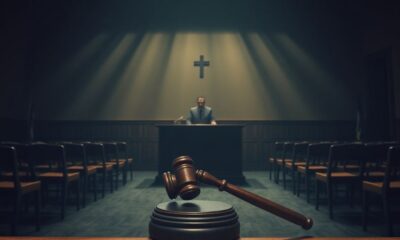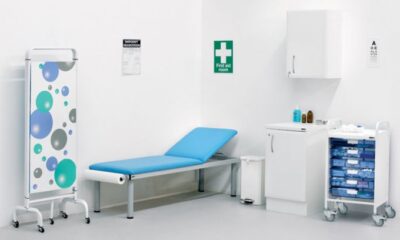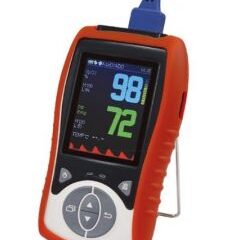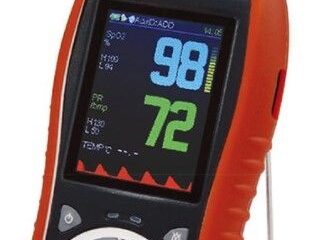Health & Fitness
Everything You Need To Know About Automated External Defibrillators

Defibrillators are the most useful diagnostic tools when it comes to saving a person from sudden heart arrest. There are different types of defibrillators available for different uses. The different types include AED(Automated External Defibrillators), Implantable Cardioverter Defibrillator (ICD), Wearable Cardioverter Defibrillator (WCD). Out of all, AED(Automated External Defibrillators) is one of the handy defibrillators one can keep at home. There is a lot to know about AED, which we shall discuss further.
When is an AED needed?
AEDs are useful to revive someone from a sudden cardiac arrest. It usually occurs when there is a disruption in the heart’s electrical activity. This causes a dangerously fast heartbeat known as ventricular tachycardia or a fast and irregular heartbeat known as ventricular fibrillation. If you are having one of these irregular heart rhythms, it is because your heart is not pumping effectively and in the worst-case scenario, it can even stop.
When such a problem happens, your brain and other vital organs do not get the required blood and oxygen. And you can even die if you are not provided with any treatment within minutes. The sooner your heart’s normal rhythm gets restored, the greater the chance that you will not be having permanent damage to your brain and other organs.
If you are having ventricular fibrillation or ventricular tachycardia, then a nearby AED is helpful. A bystander in a public place or any family member can use it to jolt your heart and bring it back to a normal rhythm and hopefully save your life.
Giving Cardiopulmonary Resuscitation (CPR) after cardiac arrest can keep blood flowing through your heart and brain for a long time. But in most cases, only defibrillation can restore the heart’s normal rhythm.
How to Use an AED
If you see that someone is lying fainted and suspect that they may need an AED, here is how you can use the AED to save someone’s life:
- Check if the person is breathing and has a pulse.
- In case you cannot feel a pulse, and the person is not breathing, call for emergency help immediately. If more than one person is present, one should call an emergency number while the other prepares the AED.
- If you are alone, call emergency services first to ensure that the help is on the way.
- The automated external defibrillator can give you step-by-step voice instructions. It guides how to check for breathing, pulse count. Additionally, it also instructs on how you should position electrode pads on the person’s chest.
- When you place the pads on the instructed place, the AED automatically measures the person’s heart rhythm. It also determines if a person needs a shock or not. If he/she is, then the machine tells the user to stand back and push the respective button to deliver the shock. The AED will alarm you not to deliver a shock if it is not needed.
- Start CPR only after delivering the shock and if the patient still needs it. You can repeat this process as many times as needed until the emergency crew takes over. The AED can also guide users on how to use CPR.
- The home AED has an instructional training video that explains how to use and maintain the device. So, if you buy an AED, everyone in your home should watch the video and even review it periodically.
- Police and ambulance crews carry AEDs, and they are commonly available in many public places too, including:
- Malls
- Sports arenas
- Office buildings
- Gyms
- Airplanes
However, most cardiac arrests occur at home, so it is wise to have a home AED. It can save precious minutes in reviving a person from ventricular fibrillation and ventricular tachycardia. You should keep home AEDs where one can easily reach them in emergencies.
Deciding If an AED is Required for Your Home
People who possess a high risk of cardiac arrest should have an AED at home. It provides peace of mind and even saves their lives. Here are some things that you need to keep in mind when you consider whether to buy an automated external defibrillator:
Your Risk of Sudden Cardiac Death
Suppose you are at high risk of sudden cardiac death due to a specific heart rhythm problem. In such a case, your doctor will likely recommend an implantable cardioverter-defibrillator (ICD) rather than an AED. The ICD is implanted in your chest and connected to your heart through a wire that can deliver a shock when needed.
Your Living ArrangementsYou needs someone with you who knows how to use the AED when you have a cardiac arrest. Also, if you live alone or if the one who lives with you is not capable enough of using AED, then a home AED might not make sense.
Your Costs
Home AEDs can be a bit expensive. Also, they usually do not get counted under insurance.
Tips for Proper Use and Maintenance of AEDs
- Buy a U.K. Food and Drug Administration approved AED
You can get the list of approved devices on the FDA’s website.
- Register Your AED With the Manufacturer
This way, you will receive safety alerts and recall notices. You should also check the manufacturer’s website periodically so that you can stay updated with the current information about your device.
- Learn What You Need to Know
Consider enrolling yourself and everyone who might need to use your home AED in a community education class. This will also enable you to rescue someone with cardiac arrest in a public place and an AED nearby. The people who might have to use the AED device should know which steps to take if the AED indicates that a person does not require a shock, but the person remains unresponsive.
- Store Your AED Device in an Easily Accessible Place
Make sure your family, friends, and visitors know where you keep the AED and the location should be easily accessible.
- Keep the AED Maintained Properly
You need to install new batteries as required, typically after every four years. You also need to replace the electrode pads as needed. It is advisable to have spare pads in hand.
- Heed Alarms
If your AED starts beeping or you see the light flashing, you should call the device manufacturer immediately.
- Buy the Right AED for You.
Some AEDs are not ideal for home use but rather only for emergency crews or installation in public places. Make sure your AED is ideal for home use.
Conclusion
AEDs are diagnostic tools by which someone can save a life. But before buying one, talk to your doctor and do the required research. And do not forget to learn all the basic AED lessons, such as CPR.
-

 Blockchain Technology6 days ago
Blockchain Technology6 days agoBlockchain Beyond Cryptocurrency: 5 Game-Changing Applications You Should Know
-

 Fitness & Wellness6 days ago
Fitness & Wellness6 days agoAre Smartwatches Worth It? The Best Wearable Tech of 2025
-

 Politics7 days ago
Politics7 days agoTrump’s Administration Races Against Time to Prevent Government Shutdown
-

 Stock Market7 days ago
Stock Market7 days agoUS-China Tariff Truce Ignites Stock Market Rally
-

 Stock Market6 days ago
Stock Market6 days agoUS-China Tariff Agreement Fuels Stock Market Rally
-

 Business6 days ago
Business6 days agoChavez-DeRemer Unveils Historic Investments to Empower American Workers
-

 Civil Rights6 days ago
Civil Rights6 days agoConstitutional Crisis: Outrage Over Proposed Elimination of Habeas Corpus
-

 Stock Market5 days ago
Stock Market5 days agoUS-China Tariff Cuts Ignite Stock Market Surge























